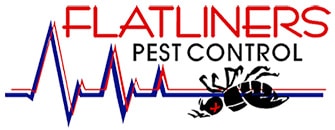Many household items unexpectedly attract pests, leading to unwelcome infestations in your home. By identifying these hidden culprits, you can take effective measures to protect your living space.
Whether it’s ants swarming a sugary spill or rodents nesting in cluttered corners, understanding what draws pests into your house is essential for maintaining a healthy and pest-free environment.
- Food Crumbs & Spills
- Houseplants
- Leaky Pipes
- Dirty Laundry
- Cardboard & Paper Clutter
- Dry Goods
- Pet Food
- Trash Bins
- Indoor Firewood
- Dirty Dishes
1. Food Crumbs & Spills Left Uncleaned
Crumbs and food spills are one of the most common causes of pest infestations. Ants, fruit flies, and other bugs are drawn to the easy food sources these leftovers provide. Regularly cleaning up after meals, especially in the kitchen and dining areas, can significantly reduce the attraction for pests looking for their next meal.
2. Houseplants Can Attract Pests
While houseplants add beauty to your home, they can also attract insects like aphids and whiteflies. These bugs feed on plant sap and can multiply quickly if not managed. To prevent this, inspect your plants regularly and treat any signs of infestation promptly with eco-friendly solutions.
3. Leaky Pipes Create Ideal Pest Environments
Leaks create moist environments that are ideal for pests like cockroaches and silverfish. These household pests thrive in damp conditions provided by dripping faucets or leaky pipes. Fixing leaks not only conserves water but also reduces the likelihood of attracting pests into these damp spaces.
4. Dirty Laundry Can Trap Food Particles
Dirty laundry left in hampers can become a magnet for fabric-loving pests like carpet beetles and moths. Sweat and food particles trapped in clothing serve as a perfect food source for these bugs. Cleaning clothes regularly and storing dirty laundry in closed hampers can help prevent infestations.
5. Cardboard & Paper Clutter Offer Nesting Spots
Cardboard boxes and paper piles offer ideal nesting spots for insects such as cockroaches and silverfish. These materials are easy for pests to chew through and use as shelter. To deter pests, declutter regularly and store important papers in plastic bins rather than cardboard boxes.
6. Poorly Sealed Dry Goods Become A Food Source
Pantries stocked with dry goods like flour, cereal, and pasta can attract pantry pests including weevils and meal moths. These pests can infiltrate poorly sealed containers. Always store dry goods in airtight containers to prevent pests from accessing and contaminating your food supply.
7. Pet Food Left Out Feeds Pests
Leaving pet food out can attract a variety of pests such as ants, cockroaches, and rats. These creatures see pet food as an easy meal. To prevent pest problems, serve pet food in small amounts and promptly remove any leftovers after feeding times.
8. Trash Bins Draw In Pests
Overflowing trash bins in and around your home can serve as entry points for pests looking for food. Pests like rats and raccoons are drawn to the smell of food waste. Use trash cans with tight-fitting lids and ensure garbage is disposed of regularly to deter these invaders.
9. Firewood Stored Indoors Can Harbor Pests
Firewood brings warmth to a home but can also harbor pests like termites and ants. Storing wood inside increases the risk of introducing these pests. Always store firewood at least 20 feet away from your home and off the ground to minimize pest attraction.
10. Dirty Dishes Breed Bacteria & Attract Pests
Dirty dishes accumulate after meals, often piling up quickly after involved cooking sessions. Addressing them promptly is essential, as leaving them unattended can lead to bacterial growth and attract pests. Approaching dishwashing mindfully can transform it into a calming activity, offering a moment for reflection. Once cleaned and organized, the kitchen is prepared for future use.
Effective Pest Prevention Strategies
- Maintain Cleanliness: Regularly clean kitchen surfaces, dining areas, and floors to eliminate food residues that attract pests. Pay special attention to promptly wiping up spills and crumbs.
- Seal Entry Points: Inspect and seal cracks, gaps, and openings around windows, doors, and utility penetrations to prevent pests from entering your home.
- Proper Food Storage: Store dry goods and pet food in airtight containers to deter pests from accessing potential food sources.
- Manage Waste Effectively: Use trash cans with tight-fitting lids and dispose of garbage regularly to minimize attractions for pests.
- Address Moisture Issues: Fix leaky pipes and eliminate standing water to reduce moisture levels that attract pests like cockroaches and mosquitoes.
- Declutter Living Spaces: Regularly organize and declutter areas such as basements, attics, and garages to eliminate potential nesting sites for pests.
- Regular Home Inspections: Conduct routine inspections of your home to identify and address signs of pest activity early, preventing infestations from becoming severe.
Protect Your Home With Professional Pest Control
Living in Las Vegas, NV means dealing with unique pest challenges, but you don’t have to face them alone. With Flatliners Pest Control, you can ensure your home remains protected from unwanted invaders.
Our professional services offer customized, eco-friendly solutions tailored to your specific needs, providing peace of mind and a pest-free environment. Reach out today to take the first step in safeguarding your space.

